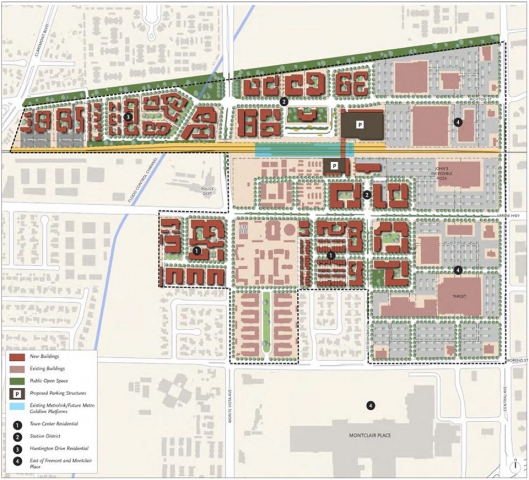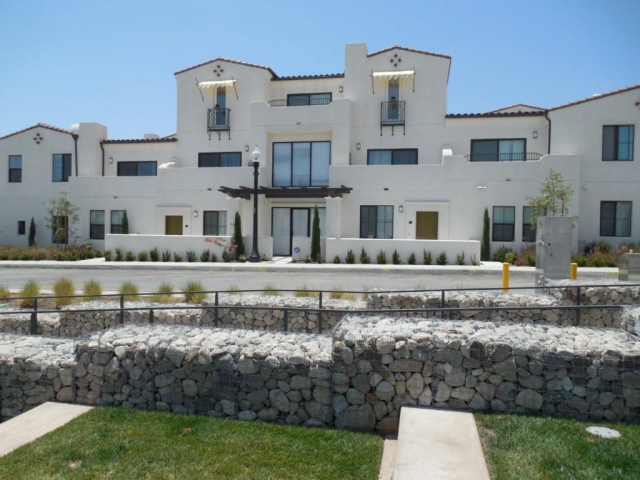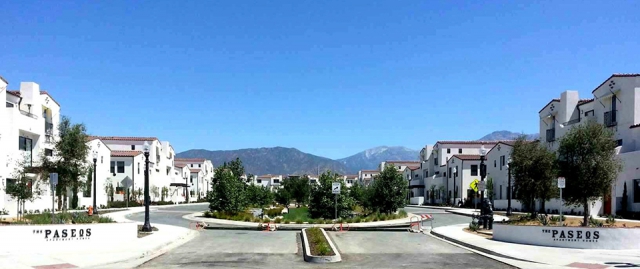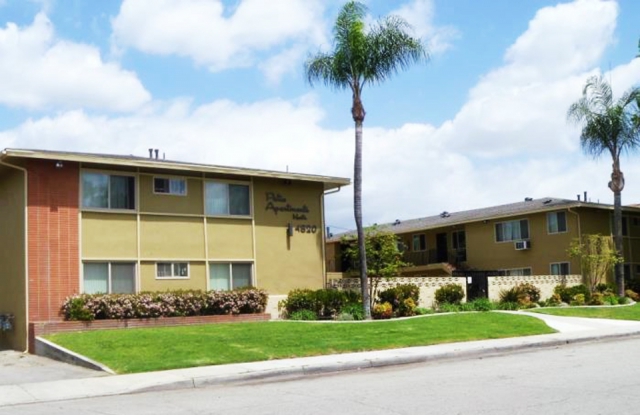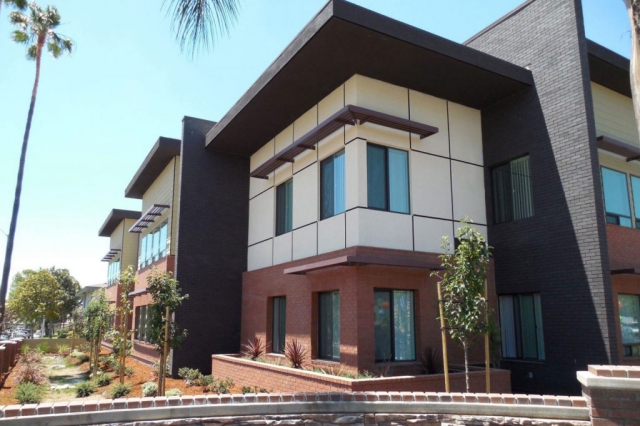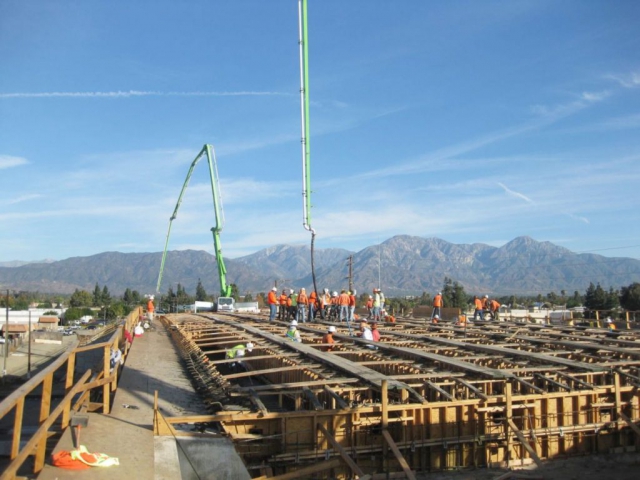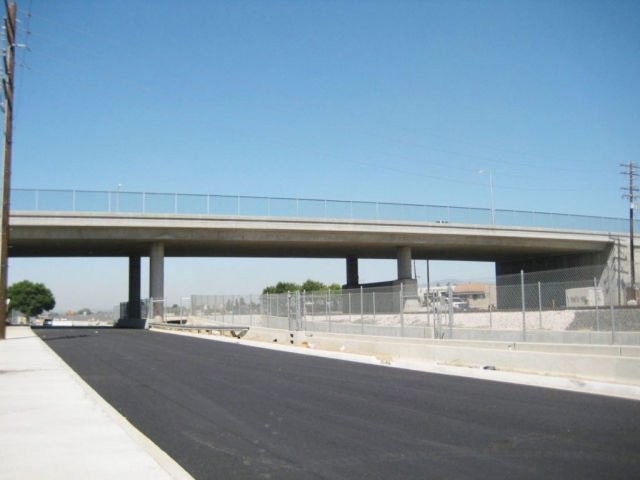City of Montclair
North Montclair Downtown Specific Plan
Originally financed by the City of Montclair Redevelopment Agency in 2006, the North Montclair Downtown Specific Plan established new land use designations and policies to create transit-oriented development in North Montclair. Within the boundaries of Redevelopment Project Area No. III, the North Montclair Specific Plan includes 150 acres planned for new high density residential and mixed use development. The Montclair Transcenter forms the basis for the transit-oriented development offering Omnitrans, Foothill Transit and Riverside Transit bus services and a Metrolink rail station. In 2026, the Montclair Transcenter will also serve and the terminus of Gold Line light rail services from Los Angeles Union Station and Pasadena.
The Paseos
The Paseos is the first transit- oriented development constructed within the boundaries of the North Montclair Downtown Specific Plan area. The Paseos consists of 385 units that include a public park located within walking distance of the Montclair Transcenter. Within Redevelopment Project Area No. III boundaries, the Paseos project reflects how the use of redevelopment funds to finance a specific plan can begin to positively change the character of a community.
Montclair Housing Corporation
With the use of redevelopment Low-to Moderate-Income Housing Funds, the Montclair Redevelopment Agency financed the acquisition and rehabilitation of 17 existing single family homes and 80 existing apartment units. The former Redevelopment Agency deed restricted the units for use as affordable housing and approximately 80 of the units are rented to very low income families. A nonprofit corporation, the Montclair Housing Corporation, was incorporated by Redevelopment Agency to manage and operate the units. Today, the units are owned by the Montclair Housing Authority and operated by the Montclair Housing Corporation.
San Emi Affordable Special Needs Housing Project
In 1996, the Montclair Redevelopment Agency began looking at the area called the San Antonio Gateway; an area known to be plagued with blight, crime, and sub-standard living conditions. The Redevelopment Agency began a mission to revitalize this area and began focusing on land use plans involving some of the underutilized properties. In an effort to create new affordable housing, the Redevelopment Agency worked with a nonprofit affordable housing developer. The result has been four phases of completed affordable housing; all four projects are adjacent to each other. The four multi-phased developments include:
- San Antonio Vista, 2007 – 75 unit family affordable development
- San Marino, 2010 – 85 unit senior (HUD 202) affordable development
- Vista Del Cielo, 2011 – 50 unit family affordable housing development
- San Emi, 2014 – 19 unit Special needs housing project (HUD 811)
The San Emi project, pictured above, was developed after redevelopment dissolution and a one and one half year dispute with the Department of Finance to convince the State that the property, which had been acquired and optioned, was going to be developed for affordable housing purposes. The high quality affordable housing projects have spurred other private sector investment in the area.
Ramona Grade Separation
The former Montclair Redevelopment Agency conducted many public improvement projects. One project of note was the Ramona Avenue Grade Separation project located in Redevelopment Project Area No. V. The Grade Separation project was constructed to span the Union Pacific Railroad tracks which carry 57 freight trains per day, 21 Metrolink trains, and two Am Track trains. The railroad line is a part of the Alameda Corridor Goods Movement Project expanding train traffic carrying goods from the Ports of Long Beach and Los Angeles to the train classification yard in Colton. Freight cars are moved in various different lots and locations at the classification yard. By 2021, the Alameda Corridor Project is anticipated to increase the amount of freight train traffic by 50 percent on the Union Pacific line. Automobiles waiting for train traffic to clear can already wait in excess of 20 minutes per train. Doubling the amount of freight traffic would cause debilitating train delays. Construction of the Grade Separation was necessary to assure public safety vehicles could reach all areas of the City without encountering such train traffic delays. The Grade Separation also reduces vehicle emissions from vehicles waiting for trains to pass.
The former Redevelopment Agency utilized Tax allocation Bond proceeds to acquire many of the properties needed for right-of-way for the Ramona Grade Separation. The Grade Separation project used over $5 million in Tax Allocation Bonds for right-of-way acquisition and construction-related costs. There was a financial contribution from the Public Utilities Commission Grade Separation Fund to the project for $5 million, the South Coast Air Quality Management District contributed $500,000, and Union Pacific Railroad contributed $650,000. Over $6 million was garnered from federal transportation funds for the grade separation. With all combined funding sources, the $17.2 million project was completed in mid 2010. The Redevelopment Agency began acquiring property for this project in 1999.
